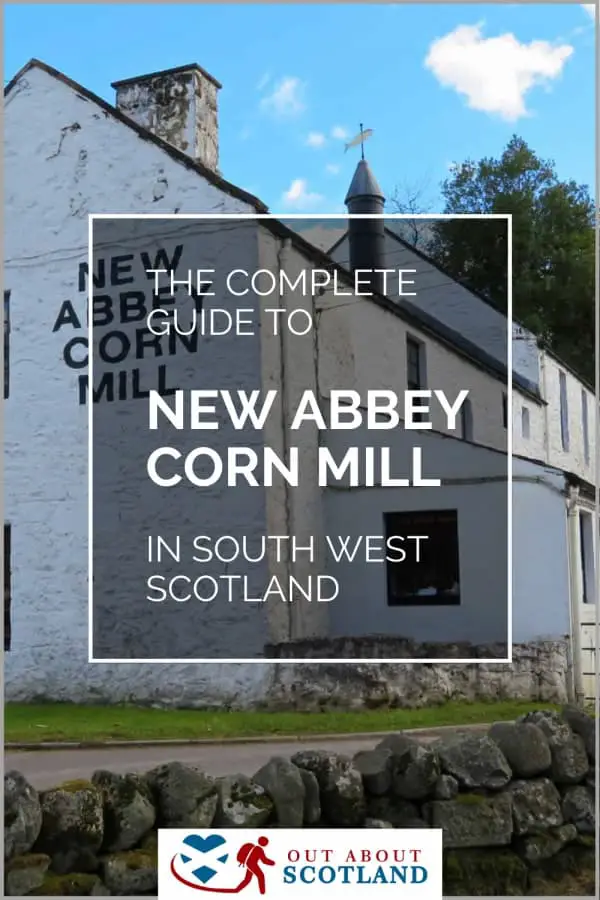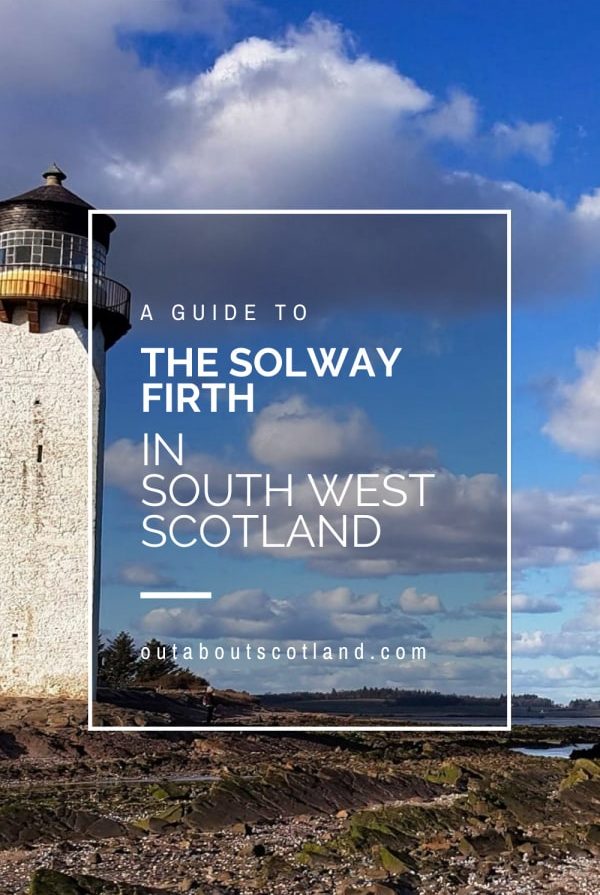Dumfries and Galloway is a region in southwest Scotland known for its mix of dramatic coastline, rolling hills, and dense forests which make it a paradise for nature lovers. It’s bounded by the Irish Sea to the west, the Solway Firth to the south, and the Southern Uplands to the north, and has two major towns – Dumfries and Stranraer – which are surrounded by numerous smaller towns and villages scattered throughout the region.
Dumfries and Galloway is well known for its cultural heritage as it’s the birthplace of Robert Burns, so if you’d like to immerse yourself in his works I recommend the Robert Burns Centre in Dumfries which offers visitors an in-depth look at his life and works. The region is also home to the annual Wigtown Book Festival, while its arts scene is celebrated at the annual Spring Fling event.
When it comes to tourist attractions, Dumfries and Galloway certainly doesn’t disappoint. Among the most notable attractions are Caerlaverock Castle, a 13th-century triangular fortress, and Sweetheart Abbey, a preserved 13th-century Cistercian monastery.
Nature lovers will be drawn to Galloway Forest Park (the UK’s first Dark Sky Park), and the Mull of Galloway which is Scotland’s most southerly point. The region also boasts several beautiful gardens such as the Logan Botanic Garden and Threave Garden.
Agnew Park
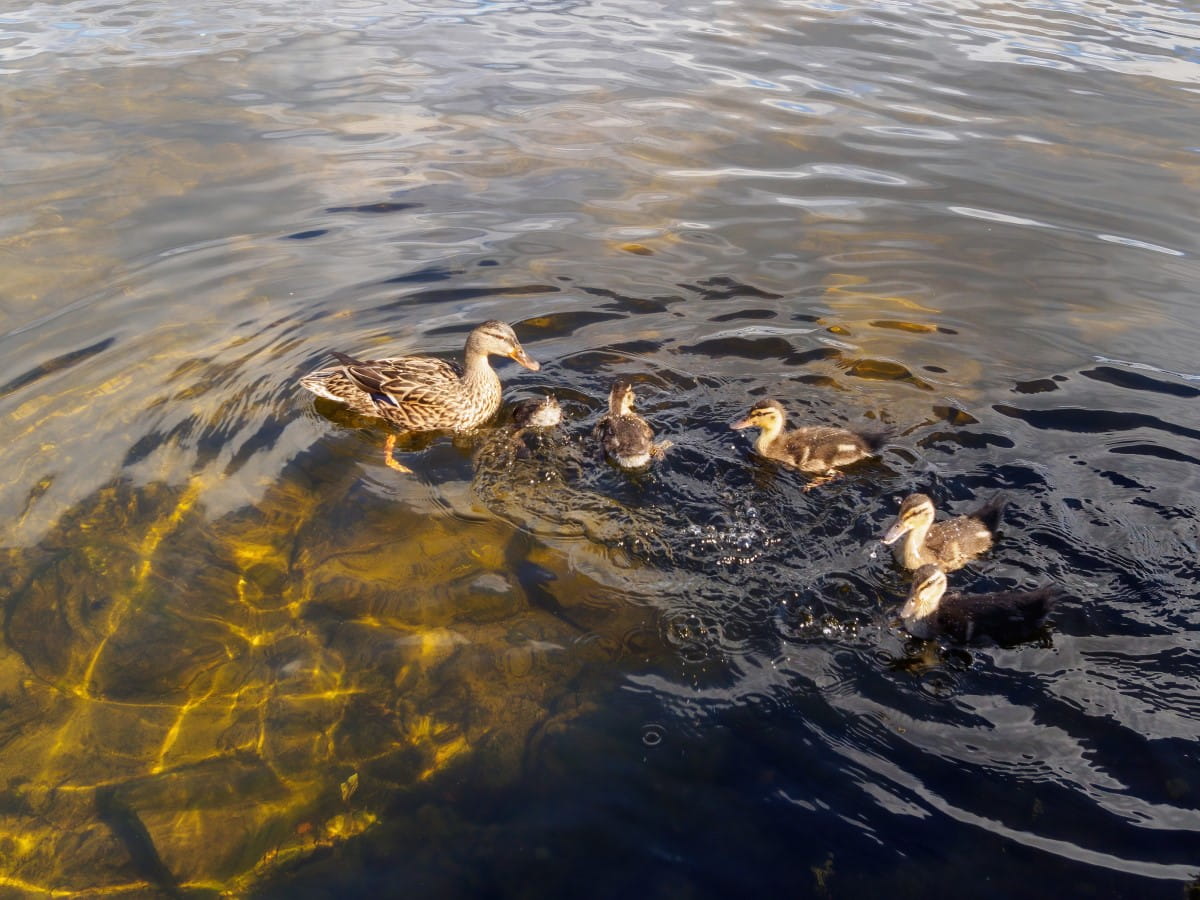
- Address: Agnew Crescent, Stranraer, Wigtownshire, DG9 7JZ
- Opening Times: Open year-round.
- Website: Agnew Park
Agnew Park is a gem tucked away in the northwest corner of the town of Stranraer. Facing the shores of Loch Ryan, the park offers stunning views of the loch and is just a short walk from the town centre, making it easily accessible for tourists. The centrepiece of the park is its lake which features a play area on a wee island complete with a pirate ship which is guaranteed to keep kids busy for a good hour while mums and dads take a break in the nearby Driftwood Cafe.
The park also provides ample parking at the Agnew Crescent car park, public toilets, picnic facilities, and easy access to the strip of golden sand at Stranraer West Beach, meaning it’s a great place for families to head to on a summer’s day. Older children can bomb around a mini pedal-powered go-kart track as well as hop on board a mini railway that trundles its way around the park, or simply do what kids do best and zoom around the large open lawn area on the park’s west side.
For anyone looking for a place to relax, there’s also the simple pleasures of strolling along the shoreline or watching the boats sail in and out of the nearby harbour, while history enthusiasts can take a walk to the Castle of St. John – a medieval tower house that was built in the 1500s.
Protect Your Family From Scotland's Biting Midges
- Powerful, reliable protection for up to 8 hours
- Water- and sweat resistant
- Repels midges, mosquitoes, horse flies, sand flies, fleas and ticks
- Safe for use on adults, children over 30 months and pregnant women
- Non-sticky, moisturising with a pleasant fragrance
- Packaging may vary
Dalbeattie Museum
- Address: Southwick Rd, Dalbeattie, DG5 4BS
- Opening Times: April to October: Mon-Sat 11:00 till 16:00
Dalbeattie Museum, located in the small town of Dalbeattie, was established in 1985 by the Dalbeattie Museum Trust, a group of local history enthusiasts dedicated to preserving and showcasing the town’s heritage. The museum is housed in a historic, Victorian-era building which is filled to the rafters with a variety of exhibits designed to bring the town’s history to life. These range from displays about the local granite industry which led to Dalbeattie becoming known as the ‘Granite Town’, to exhibitions about the town’s role in World War II.
The museum’s collection is a genuine treasure trove as it includes everything from antique tools and equipment to photographs, local artwork, and personal items donated by residents. There’s even a working 100-year-old washing machine as well as an old barrel organ which can still be played, and medical equipment that was used at the Chrichton Royal Hospital in Dumfries.
What really sets the museum apart is its focus on local history and community, as can be seen by the fact that it’s staffed entirely by volunteers, many of whom are lifelong residents of Dalbeattie. Additionally, the museum hosts a variety of events throughout the year that celebrate the town such as talks, workshops, and special exhibitions.
Dock Park
- Address: Dock Park, Dumfries, DG1 2RY
- Opening Times: Open year-round.
- Website: Dock Park
Like Agnew Park in Stranraer, Dock Park in Dumfries is an urban oasis which is a great destination to head to for families. The park offers lovely views of the River Nith and has good facilities that include a car park, an on-site cafe, and a children’s play area complete with swings and rope obstacles.
Established in the late 19th century, the park has a classic Victorian layout with tree-lined avenues, a bandstand, and a large open lawn area, as well as a miniature golf course, a putting green, a trampoline park and bowling lawns. For those looking to unwind, there are several picnic spots and seating areas that offer views of the park and the river, and it’s close to a number of shops and restaurants where families can refill hungry bellies
Dock Park isn’t just about leisure though, as it’s a hub for events thanks to the bandstand which is a popular venue for live music performances during the summer months. The park also hosts the annual Dumfries Community Carnival, a vibrant event that brings the community together with music, dance, food, and fun activities for all ages.
Book Tours in Scotland
Galloway Forest Park
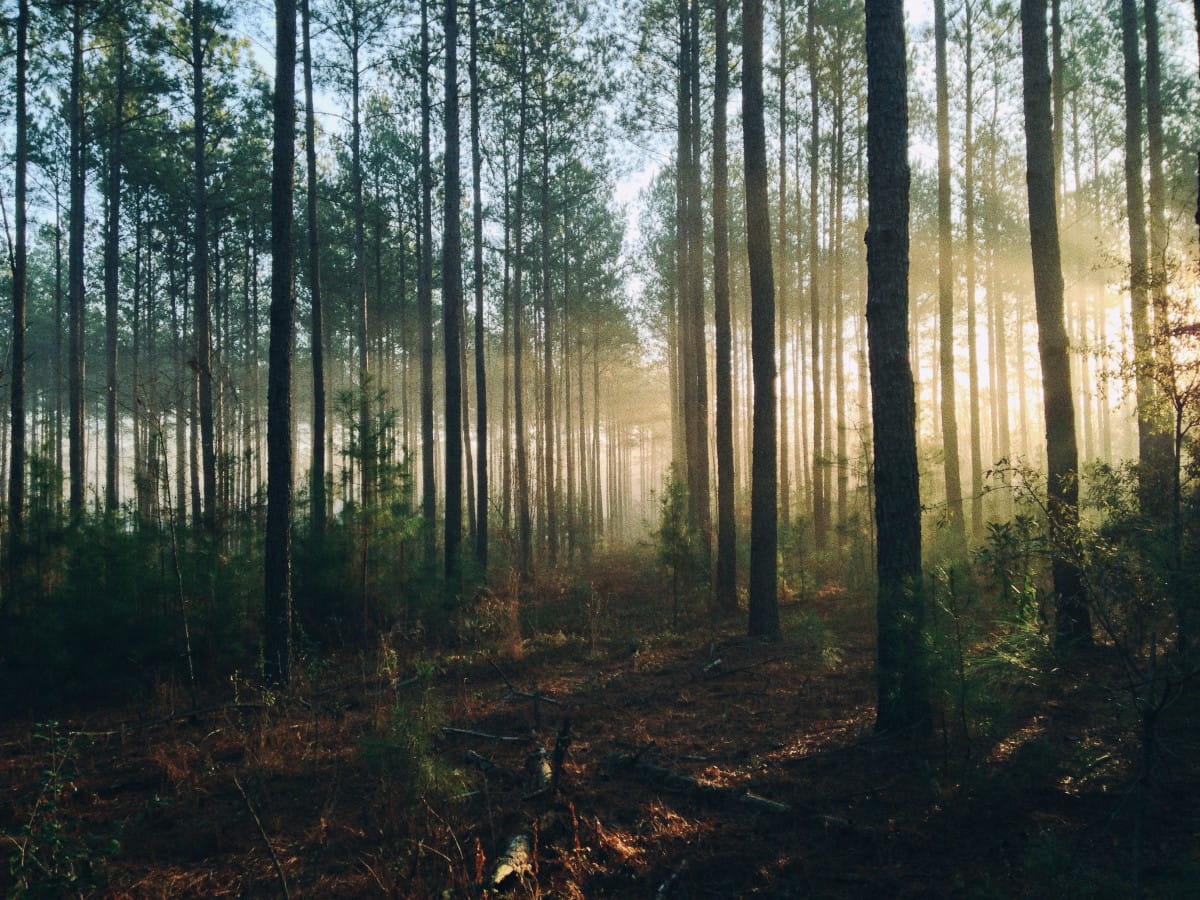
- Address: Creebridge, Newton Stewert, DG8 6AJ
- Opening Times: Open year-round.
- Website: Galloway Forest Park
Galloway Forest Park, often referred to as ‘The Highlands of the Lowlands’, spans an impressive 300 square miles, making it the largest forest park in the UK. Established in 1947, the park is managed by Forestry and Land Scotland which looks after the park’s trees, lochs, and moorland.
The park is home to a variety of wildlife including red deer, otters, and lesser-seen birds like goldcrests and crossbills, and it’s one of the best places in Scotland to spot red squirrels. One of the park’s most distinguished features, however, is its Dark Sky Park status, granted in 2009, which means it’s one of the best places in the world for stargazing due to its minimal light pollution.
For the adventurous, there are mountain biking trails that include the world-class 7stanes trails at Kirroughtree and Glentrool, and it’s also a very popular place for hiking with routes varying from leisurely forest walks to challenging hill climbs, including the Merrick which is the highest peak in southern Scotland.
The park is open year-round but the best time to visit varies depending on the activities you’re interested in. For hiking and biking, spring through autumn is ideal, while for stargazing, the winter months provide the longest nights.
Eskrigg Nature Reserve
- Address: Quaas Loaning, Lockerbie, DG11 1HY
- Opening Times: Open year-round.
- Website: Eskrigg Nature Reserve
Eskrigg Nature Reserve is located a mile southwest of Lockerbie. This 7-hectare reserve is situated amidst rural farmland and is a haven for nature lovers and wildlife lovers alike. A remarkable feature of Eskrigg Reserve is the diversity of habitats it offers, including a variety of woodlands, grasslands, and wetlands, all of which allow visitors to immerse themselves in the beauty of the area.
The reserve features a network of well-marked trails that meander through the different habitats including a 2-mile circuit that’s suitable for wheelchair users.
Birdwatchers will be delighted with sightings of birds such as great spotted woodpeckers and the elusive barn owl, and there’s a good chance of seeing iconic Scottish animals like red squirrels, badgers, and deer. For the more adventurous, the reserve also offers guided walks and wildlife spotting activities, and it’s a great place to take dogs for a walk, although it’s advisable to keep them on a lead to stop the local wildlife from being disturbed.
The only downside to Eskrigg Reserve is that there are no designated parking spaces, although there is at least a large layby on the A709 with a footpath leading to the entrance.
Protect Your Family From Scotland's Biting Midges
- Powerful, reliable protection for up to 8 hours
- Water- and sweat resistant
- Repels midges, mosquitoes, horse flies, sand flies, fleas and ticks
- Safe for use on adults, children over 30 months and pregnant women
- Non-sticky, moisturising with a pleasant fragrance
- Packaging may vary
Mossburn Community Farm
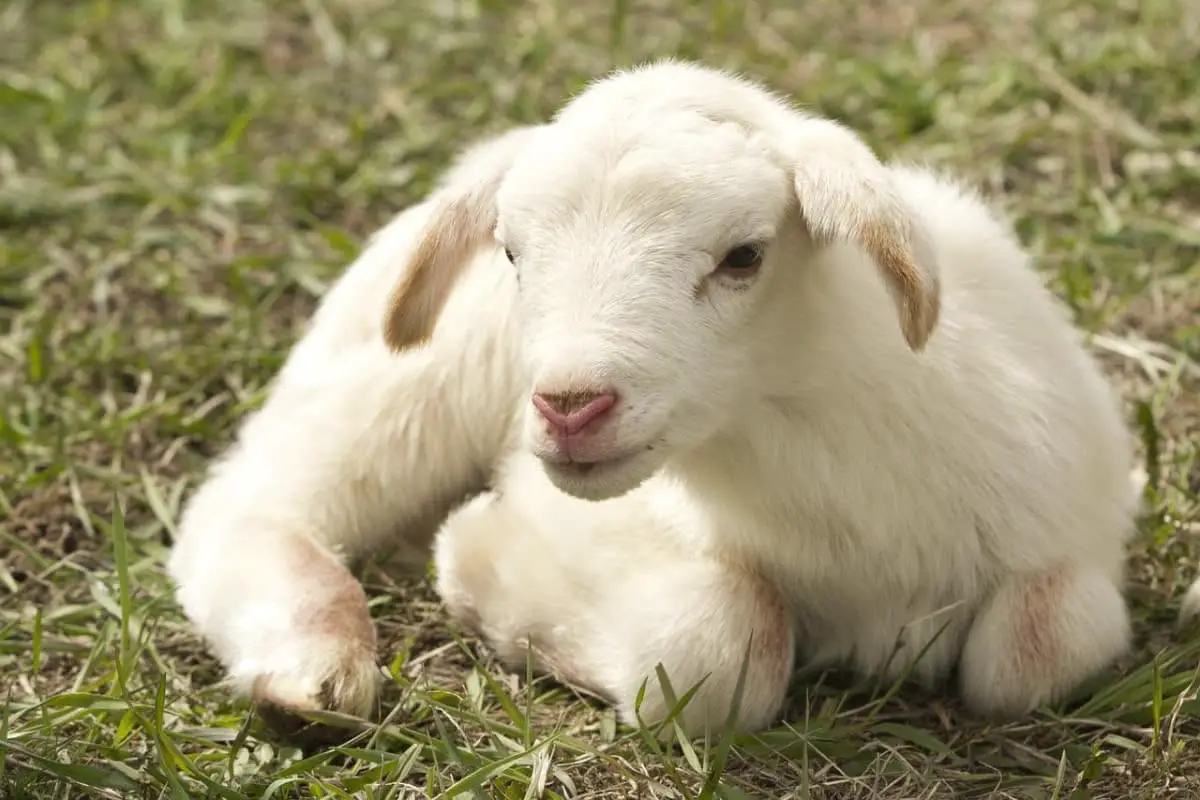
- Address: Mossburn Community Farm, Hightae, Lockerbie, DG11 1LE
- Opening Times: Daily 10 am to 3 pm
- Website: Mossburn Animal Centre
Mossburn Community Farm near Lockerbie is a sanctuary for animals that was established in 1990. The farm was originally dedicated to providing refuge for ill-treated or abandoned horses and ponies, but it now also cares for farm and domestic animals.
With a deep-rooted commitment to animal welfare, Mossburn Farm looks after everything from horses and ponies to donkeys, rabbits, goats, and birds which are free to roam on sprawling fields. The farm also has a visitor centre that showcases its work and the stories of its animal inhabitants.
Mossburn Community Farm is more than a sanctuary for animals, though, as it regularly hosts school visits, providing children with hands-on experiences of animal care and insights into animal behaviour. The farm also provides therapeutic services for individuals with special needs thanks to their animal-assisted therapy programme, creating a positive and supportive environment where everyone is welcome.
Visitors are encouraged to visit Mossburn Farm and say hello to the animals at no cost, but as they rely on donations they would be very grateful if you could leave a few pounds to help with the upkeep of the animals.
Grey Mares Tail Nature Reserve
- Address: Moffat Valley, Moffat, Dumfriesshire, DG10 9DP
- Opening Times: Open year-round.
- Website: National Trust for Scotland
Grey Mare’s Tail Nature Reserve is located in the rugged terrain of the Moffat Hills, spanning over 2,000 acres and managed by the National Trust for Scotland. Arguably the most striking feature of the reserve is the Grey Mare’s Tail waterfall, from which the reserve got its name. It’s one of the highest cascading waterfalls in Britain, plunging 200 feet down a steep, rocky ravine that formed during the last Ice Age.
The reserve is home to an array of plants and animals thanks to the expansive woodlands that are full of birch, rowan, and holly, while the moorlands are a riot of heather and bilberry. The site’s rarity and variety of wildlife have ensured that it has been designated a Site of Special Scientific Interest, and it’s also a sanctuary for wild goats, while the skies above are often graced with peregrine falcons and the occasional golden eagle.
Visitors can enjoy a variety of outdoor activities such as bird watching and photography, although hiking is the most popular thing to do with the best trail (in my opinion) being the steep climb to Loch Skeen which is home to Britain’s rarest fish, the vendace.
Book Tours in Scotland
Red Deer Range
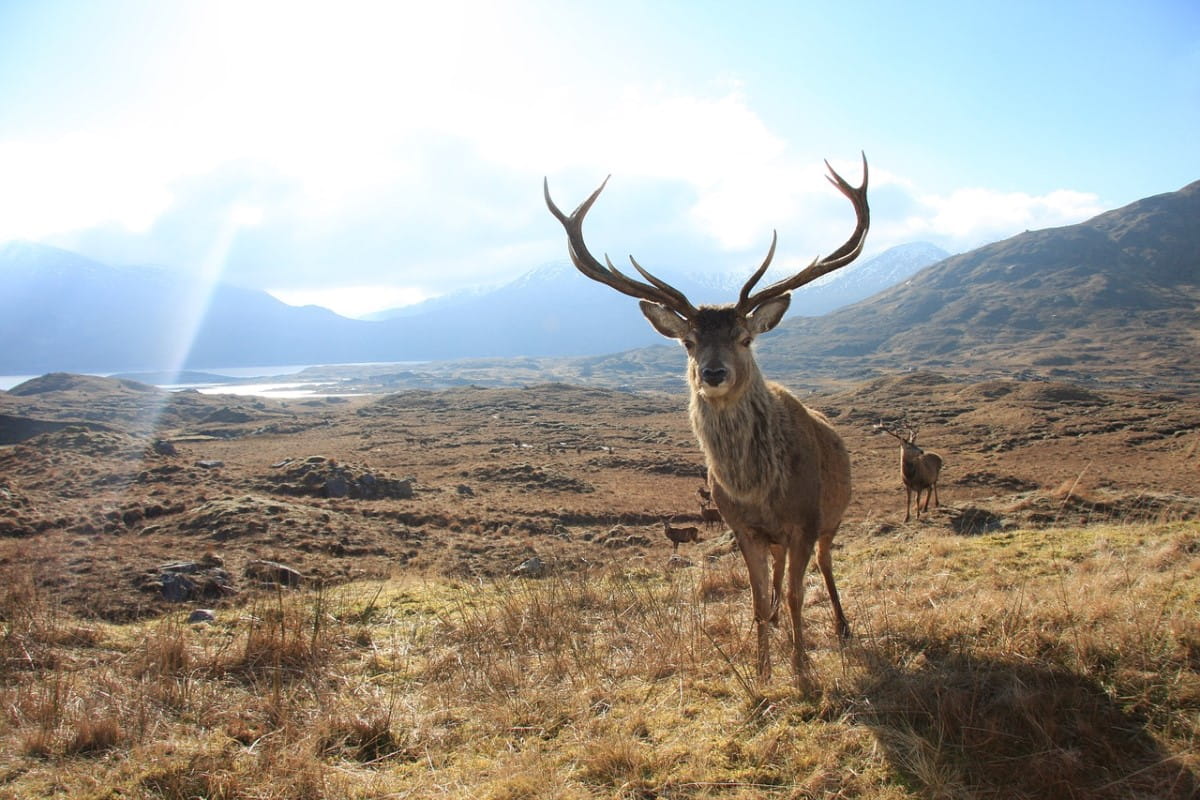
- Address: Castle Douglas, DG7 2BL
- Opening Times: Open year-round.
- Website: Forestry Land Scotland
The Red Deer Range is a free attraction within the expansive landscape of Galloway Forest Park just off the A712, roughly between the towns of Newton Stewart and New Galloway.
The range is home to herds of red deer which are well known for their impressive size, with the males, known as stags, weighing up to 190 kg and sporting magnificent antlers, while females, called hinds, are much smaller and lack antlers. This is a popular spot for photographers thanks to the opportunity to capture the deer against the stunning backdrop of the Galloway Forest, while events like the autumn rutting season when stags compete for mates draw large numbers of tourists.
The Red Deer Range covers several hundred hectares of woodland, moorland, and open grassland where the deer can move freely, feeding on grass, heather, and tree shoots. This wildlife haven offers a unique opportunity to see one of the UK’s largest land mammals in a free-ranging habitat, but visitors should be aware that it’s only possible to see the deer through a fence and from the inside of a small hut, so it’s unlikely you’ll spend more than 30 minutes at the site.
That being said, it’s a fascinating place to go for anyone who’s never seen a red deer before and it’s a great detour to take the kids if you ever find yourself driving through the area, especially if you take a few tasty carrots.
Sanquhar Tolbooth Museum
- Address: High Street, Sanquhar, Dumfries & Galloway, DG4 6BN
- Opening Times: Apr to Sept: Tues to Sun 10:00 (14:00 Sun) to 17:00
- Website: Sanquhar Tolbooth Museum
The Sanquhar Tolbooth Museum is an attraction that draws history enthusiasts and curious tourists alike. Housed in one of the oldest surviving tolbooths in Scotland, the museum brims with an eclectic range of exhibits that tell stories of Sanquhar’s fascinating history.
Built in 1731, the Tolbooth was once the centre of the town’s civic life, serving as a courthouse, a prison, a council chamber, and a marketplace, but it’s now a museum that is renowned for its displays of local history, including artefacts from the area’s coal mining and knitting industries.
The museum also boasts fascinating exhibits about the Scottish postal service due to Sanquhar’s claim to having the world’s oldest post office which was established in 1712. The exhibit includes a large collection of postage stamps, letters, and postal equipment and offers a glimpse into the evolution of transporting mail. But perhaps the most interesting part of the Sanquhar Tolbooth Museum is its jail cells. Preserved in their original state, these haunting cells transport visitors back to the harsh realities of 18th-century justice.
Whether you’re a history buff, a culture vulture, or simply seeking an enjoyable afternoon out, the Sanquhar Tolbooth Museum promises an enjoyable journey through time.
Protect Your Family From Scotland's Biting Midges
- Powerful, reliable protection for up to 8 hours
- Water- and sweat resistant
- Repels midges, mosquitoes, horse flies, sand flies, fleas and ticks
- Safe for use on adults, children over 30 months and pregnant women
- Non-sticky, moisturising with a pleasant fragrance
- Packaging may vary
The Solway Firth
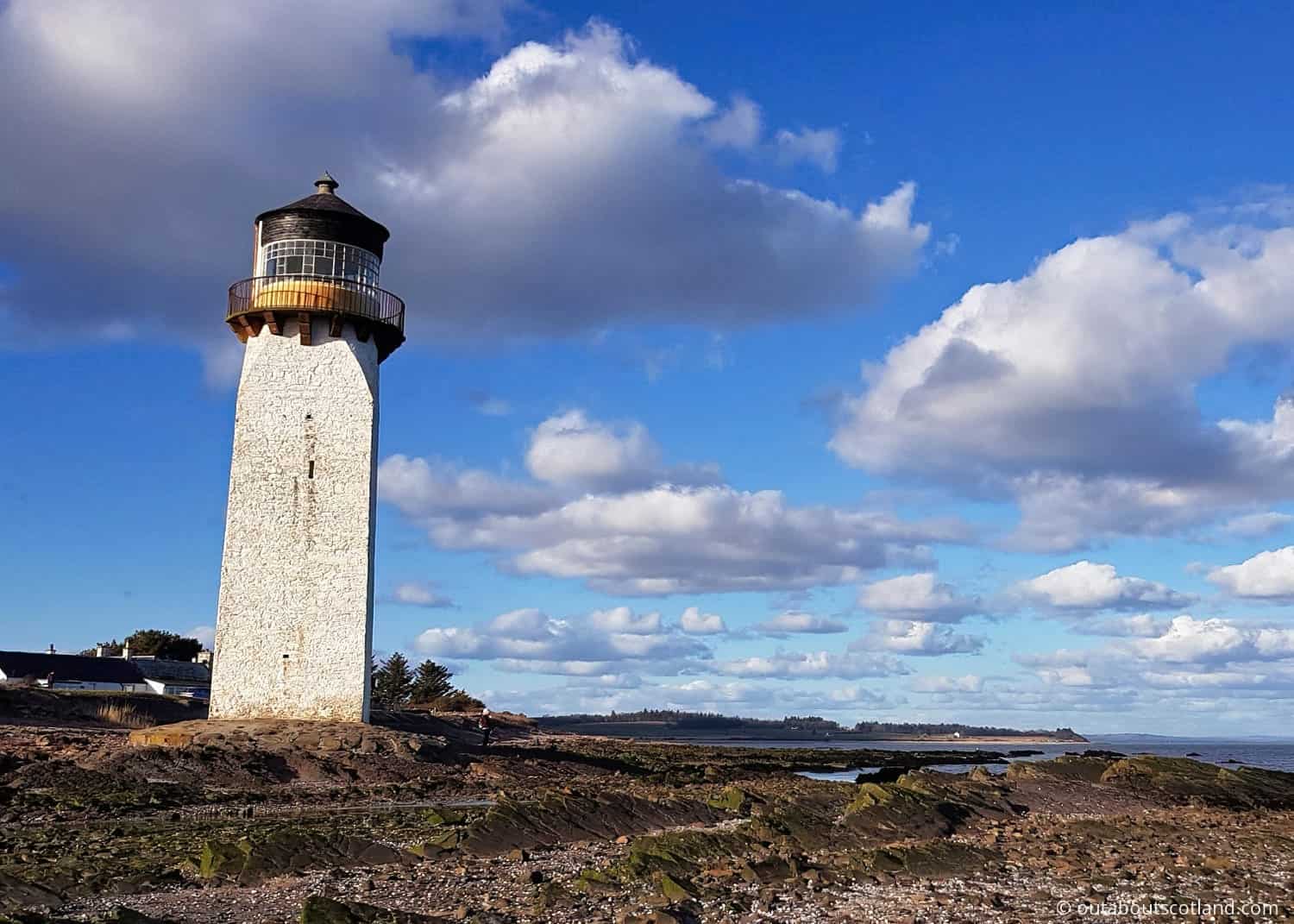
- Address: Southerness beach: Dumfries, DG2 8AX or Rockcliffe beach: Dalbeattie, DG5 4QQ
- Opening Times: 24/7, 365 days a year
- Out About Scotland Complete Guide: The Solway Firth
The Solway Firth is a remarkable estuary formed by the convergence of the rivers Esk, Nith, Annan, and Eden on the southwest edge of Scotland. Stretching across 35 miles, it has a diverse landscape of mudflats and sand dunes and is home to one of the UK’s largest continuous saltmarshes which is home to a wide range of plant and animal species.
In fact, the Solway Firth has such diverse landscapes it’s internationally recognized as a crucial habitat for waterfowl and wading birds. The Firth’s salt marshes and mudflats are feeding grounds for thousands of these birds as they migrate, making the area one of the best places in Scotland for birdwatching.
As well as its birdlife, the Solway Firth is known for its history as the area was once a frontier of the Roman Empire, with the western end of Hadrian’s Wall located at Bowness-on-Solway on the southern side of the estuary. As far as attractions, go, Caerlaverock Castle is a highlight, while for beaches and birdwatching, I personally recommend heading to Southerness (postcode DG2 8AX) and RSPB Mersehead (postcode DG2 8AH).
St. Ninians Cave
- Address: St Ninian’s Cave, Nr Whithorn, Dumfries & Galloway, DG8
- Opening Times: Open year-round.
- Website: Historic Environment Scotland
This fascinating cave, located on a wild stretch of coastline near the village of Whithorn, is said to have been the retreat of the country’s first saint, St. Ninian, thus its name. The saint, who lived in the late 4th and early 5th century, is credited with bringing Christianity to Scotland, and legend has it that he used the cave for meditation and prayer. Today, it continues to be a place of pilgrimage with hundreds of visitors making the journey each year to experience its peaceful atmosphere.
The pathway leading to St. Ninian’s Cave is a wee bit tricky to navigate as the trek involves a woodland walk from the car park at Kidsdale (postcode DG8 8JU) followed by a walk through fields for just under one mile before the view opens up to lovely views of the Irish Sea.
Inside the cave you’ll find an array of crosses inscribed on the walls that date back to the earliest days of Christianity in Scotland, while another 18 carved crosses have been moved to safety in Whithorn Priory and Museum (postcode DG8 8PY). The cave, while not large, holds an air of mystique and quiet reflection, and its historical significance, combined with the natural beauty of its surroundings, makes it an intriguing destination for sightseers looking for a more unusual attraction to visit.
Book Tours in Scotland
The Mull of Galloway Trail
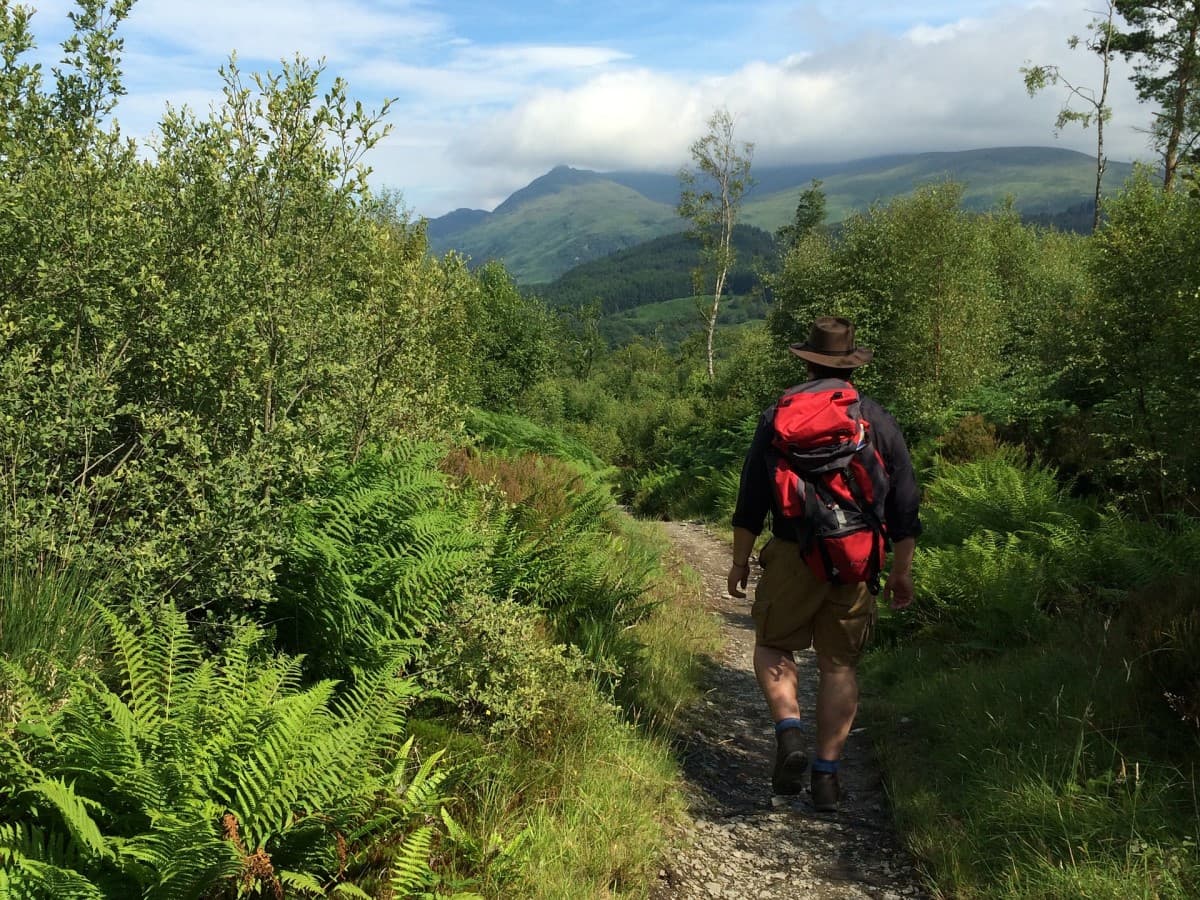
- Address: Various points of entry. See website for details.
- Opening Times: Open year-round.
- Website: D&G Outdoor Access Trust
The Mull of Galloway Trail is a long-distance path that stretches approximately 37 miles from the historic town of Stranraer, known for its lovely harbour, before heading south to the village of Sandhead which is notable for its 7-mile-long beach. From there, the trail continues to the village of Drummore and finally culminates at the Mull of Galloway, Scotland’s most southerly point, where hikers can enjoy breathtaking panoramic views of Scotland, Northern Ireland, the Isle of Man, and even the Lake District in England on a clear day.
There are several points of interest along the route. These include Dunskey Castle near Portpatrick, the ruins of Castle Kennedy and Gardens near Stranraer, and the RSPB Nature Reserve at the Mull of Galloway.
At the end of the trail, don’t miss the Mull of Galloway Lighthouse where you can climb to the top for a small fee and experience stunning views across the sea. The trail is considered moderate in terms of difficulty with a few uphill sections and uneven terrain, though most of the trail is relatively flat and well-marked, making it suitable for hikers of all skill levels.
Station Park
- Address: Beattock Road, A701, Moffat, DG10 9HF
- Opening Times: Open year-round.
- Website: Visit Moffat
Station Park is a hidden gem in the burgh of Moffat. This picturesque park was once the site of Moffat’s railway station, but when the railway line closed in 1964 the station was repurposed into a leisure space complete with a boating pond.
Visitors can rent pedal boats and explore the waters of the pond as well as walk around it on concrete footpaths while enjoying the sights of the beautifully maintained garden which bursts into a riot of colours during spring and summer. The park has a well-equipped playground that caters to children of all ages with swings, slides, and climbing frames, and for the adults, there’s an 18-hole putting green.
With regard to amenities, there’s a large car park on the other side of the A701 as well as a few cafes and shops in Moffat, and if you’re looking for something else to do after visiting the park you’ll find several designated walking trails that start at the River Annan next to the car park.
Protect Your Family From Scotland's Biting Midges
- Powerful, reliable protection for up to 8 hours
- Water- and sweat resistant
- Repels midges, mosquitoes, horse flies, sand flies, fleas and ticks
- Safe for use on adults, children over 30 months and pregnant women
- Non-sticky, moisturising with a pleasant fragrance
- Packaging may vary
The Mill on the Fleet
- Address: High Street, Gatehouse of Fleet, DG7 2HS
- Opening Times: Mar to Oct: 10:00 – 17:00
- Website: Mill on The Fleet
The Mill on the Fleet is a historic 18th-century industrial mill located in the riverside town of Gatehouse of Fleet. Named after the River Fleet, the Mill has a long history and offers a fascinating glimpse into Scotland’s industrial past.
Constructed in 1788, the Mill on the Fleet served as a cotton mill during the height of the Industrial Revolution. It played a central role in the town’s development and employed a large number of the local population, contributing to Gatehouse of Fleet’s reputation as an industrial hub during the late 18th and early 19th centuries.
The Mill originally contained spinning and carding machines, with the power generated by the river driving a large waterwheel. Although the machinery has long since been removed, the building’s interior retains much of its original character and offers visitors a glimpse into how it would have looked in its heyday.
Today, the Mill on the Fleet has been renovated and repurposed as a visitor and educational centre. It houses a museum dedicated to the heritage of Gatehouse of Fleet which showcases a range of exhibits that explore the town’s industrial past, its natural environment, and its cultural history. The Mill also features a café, a bookshop, and a gallery that hosts a rotating program of exhibitions by local artists. Additionally, it serves as a venue for a variety of community events including concerts, lectures, and workshops.



